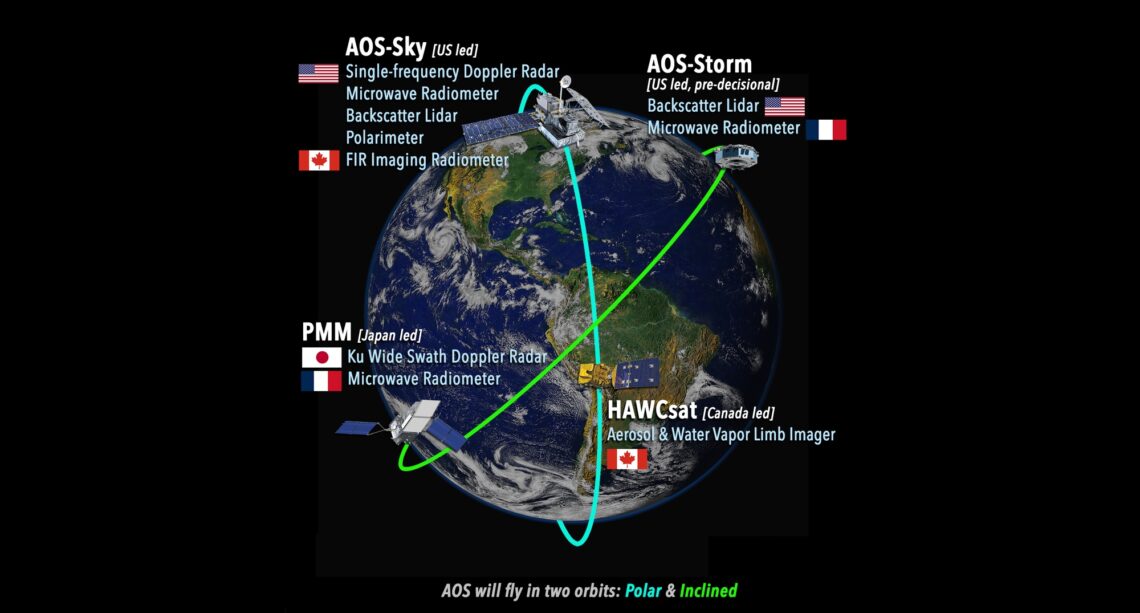WASHINGTON — NASA is revamping a major series of Earth science missions, delaying some and relying more on international partners for others to reduce costs.
As part of NASA’s fiscal year 2025 budget proposal released March 11, the agency said it was restructuring the Earth System Observatory line of missions. Those missions are intended to collect data on “designated observables” identified by the Earth science decadal survey in 2018.
As recently as December, NASA said it was moving ahead with four of the missions: Atmosphere Observing System (AOS)-Storm, AOS-Sky, Surface Biology and Geology, and Mass Change, now called GRACE-C. A fifth mission, Surface Deformation and Change, was in an extended study phase.
The fiscal year 2025 budget proposal, though, would make significant changes in four of the five missions. Only GRACE-C is continuing largely unchanged in the proposal, which NASA officials say is due to budget pressures on NASA in general and Earth science in particular.
During a March 13 online town hall for NASA’s Earth science division, Julie Robinson, deputy director of the division, noted that projections for future Earth science budget dropped significantly in the 2025 proposal. That proposal projects spending about $12.25 billion on Earth science between fiscal years 2025 and 2029, nearly $1.2 billion less than the five-year runout in the 2024 budget proposal.
“That is the challenge that we had to address in this budget,” she said. “We needed to find some smart ways to bring some of the costs of those missions down.”
Robinson said NASA has adopted a strategy for the Earth System Observatory called “decouple, partner and compete.” That includes splitting large missions into several smaller ones, making greater use of international partnerships and opening some missions up to competition rather than being directed missions.
The strategy has the biggest impact on AOS-Storm and AOS-Sky. AOS-Storm will…
Read the full article here


